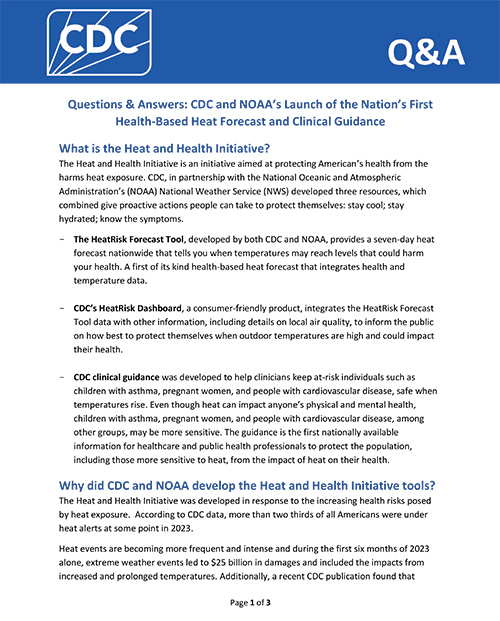For children with asthma, heat can provoke asthma symptoms, especially because warmer temperatures can worsen air quality. Breathing polluted air can trigger asthma attacks. In addition, humidity and dehydration can worsen lung function and can contribute to more severe asthma symptoms. Poor and minority children overall experience higher rates of asthma and can suffer disparate impacts from heat. The Heat and Health Initiative has released Clinical Guidance to help health care providers keep at-risk individuals such as children with asthma safe when temperatures rise. This guidance is the first nationally available information for healthcare and public health professionals to protect the population, including those more sensitive to heat, from the impact of heat on their health. Included in the guidance are Patient Management and Patient Toolkits with tips and action plans for both children and teens with asthma.
The guidance is part of a set of three resources developed by the Health and Health Initiative, a partnership of the National Oceanic and Atmospheric Administration’s (NOAA) National Weather Service (NWS) and the Centers for Disease Control and Prevention (CDC) to give proactive actions people can take to protect themselves: stay cool; stay hydrated; know the symptoms. The other two resources include the HeatRisk Forecast Tool, which provides a seven-day national-scale heat forecast that tells you when temperatures reach levels that could harm health, and CDC’s HeatRisk Dashboard serves as a portal into all our new heat resources for the nation and includes the HeatRisk Forecast Tool, details on local air quality, and actions to stay safe on hot days or days with poor air quality

